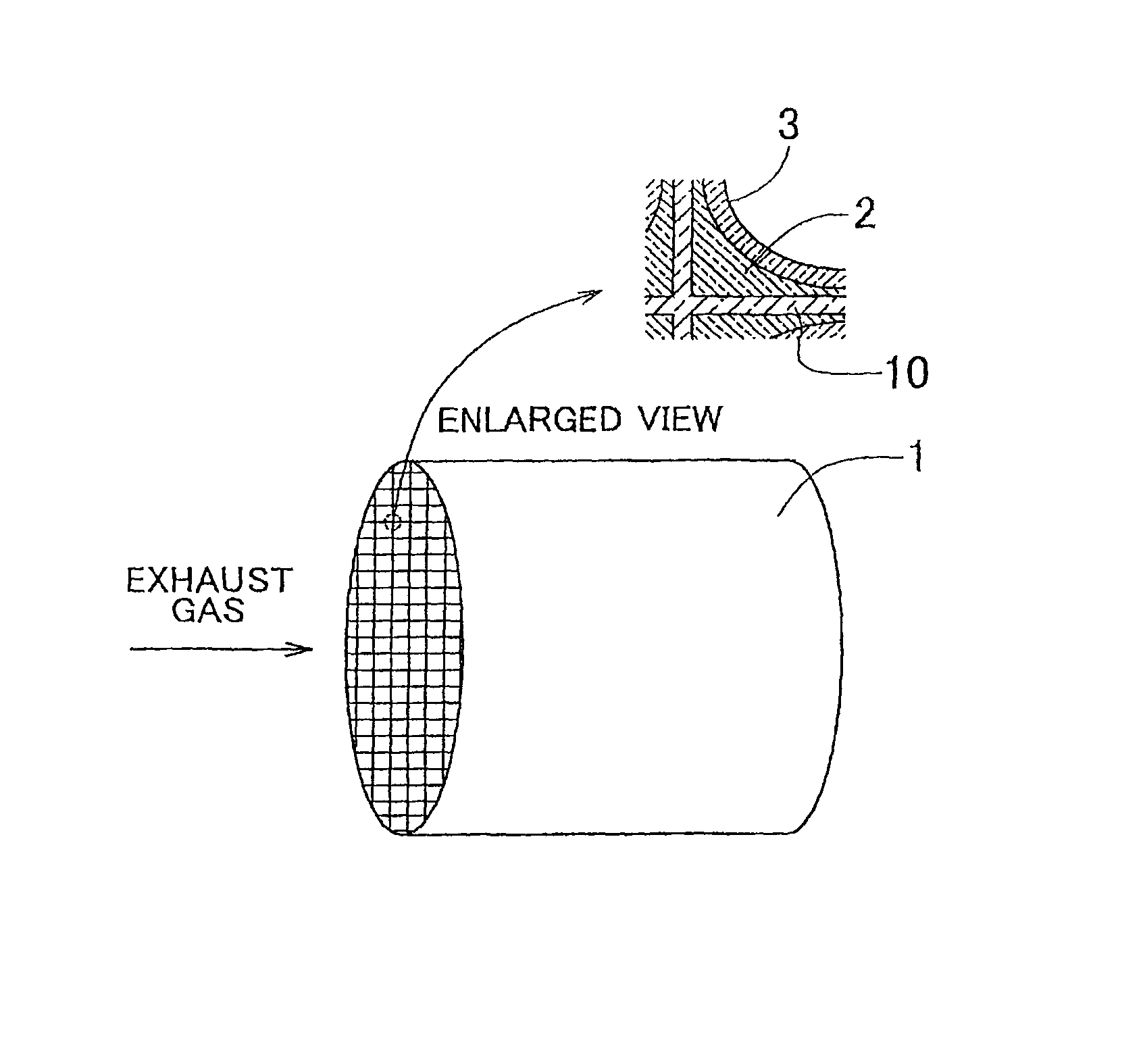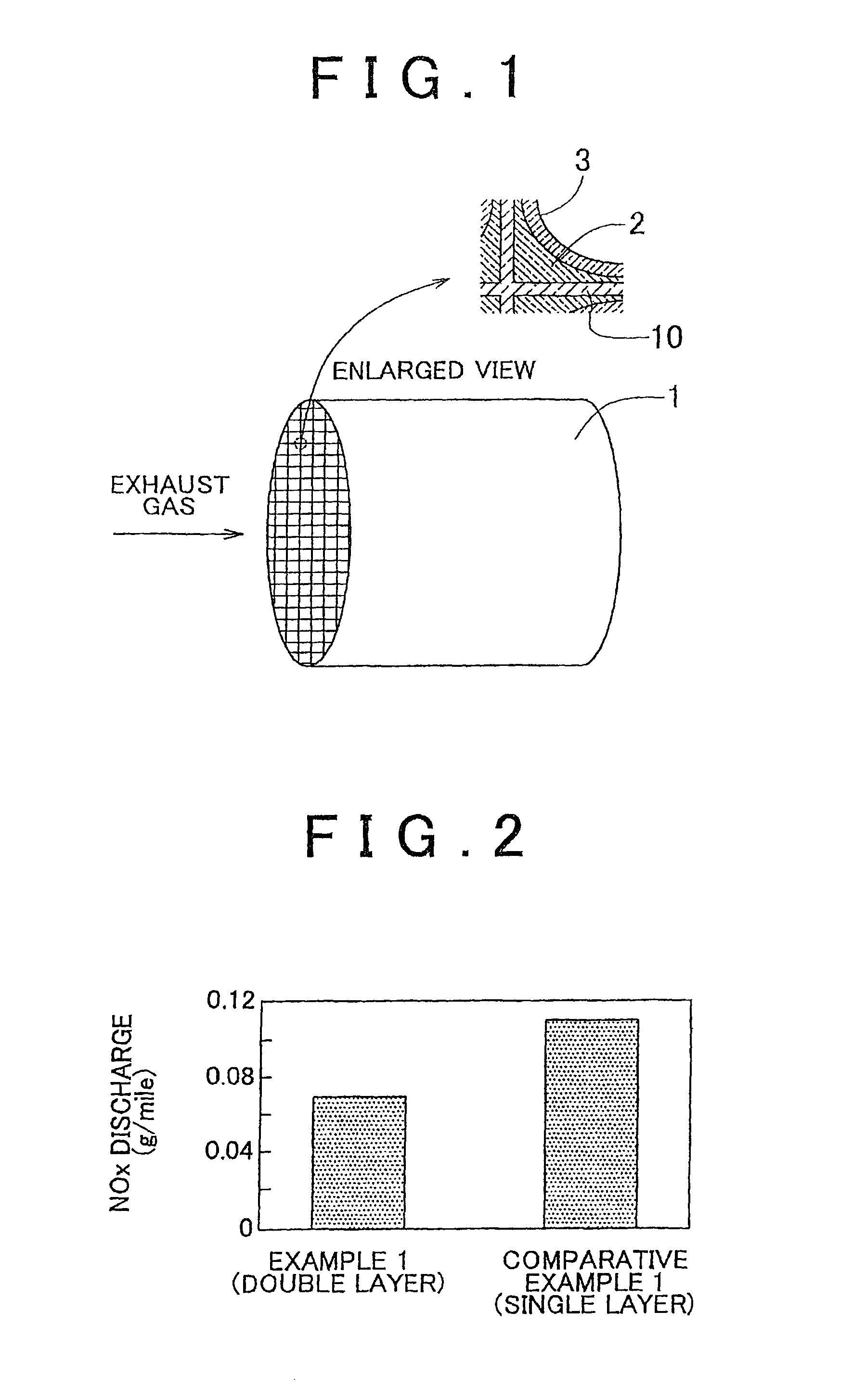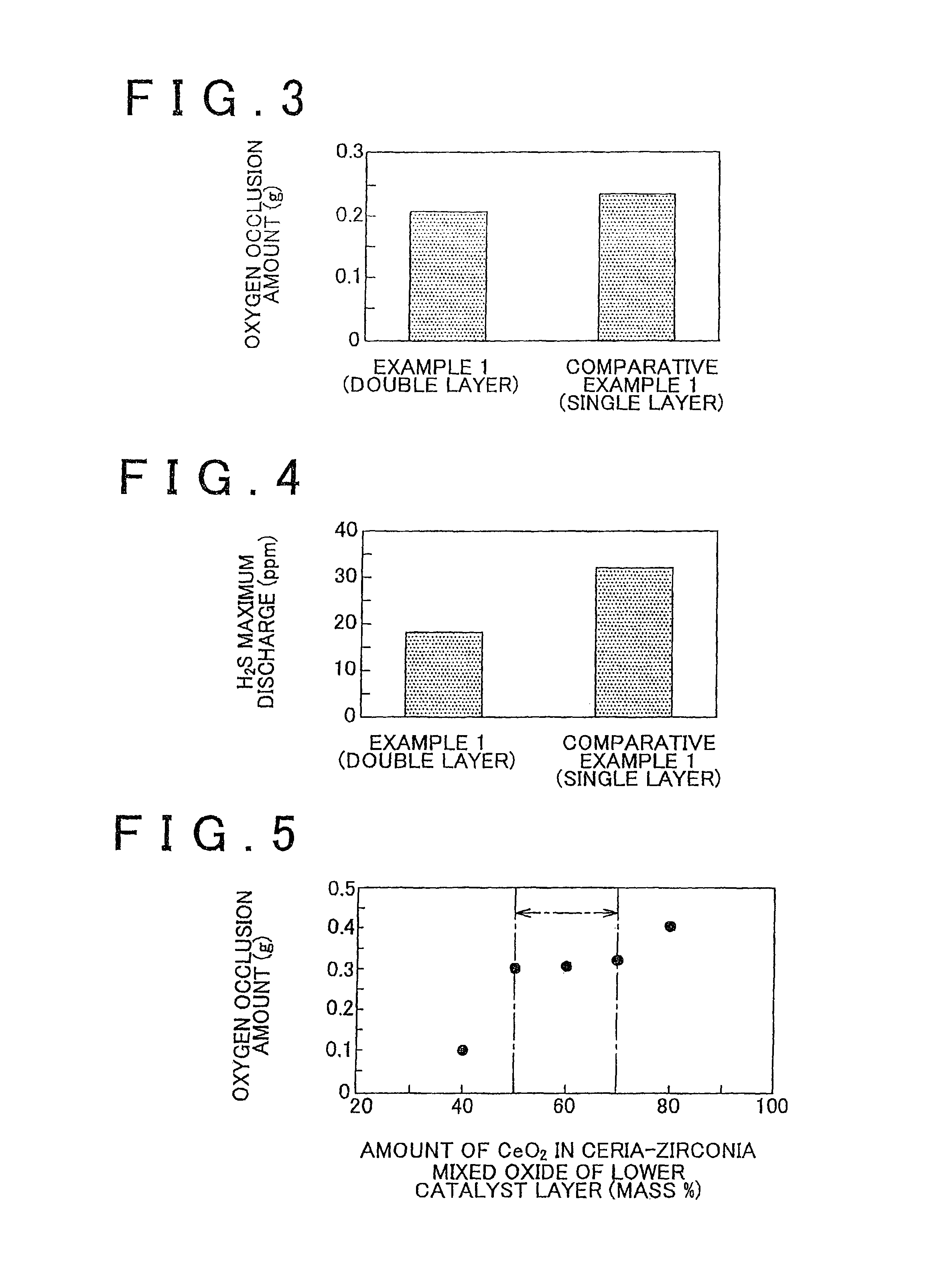Exhaust gas purification catalyst
a technology of exhaust gas and purification catalyst, which is applied in the direction of physical/chemical process catalysts, other chemical processes, separation processes, etc., can solve the problems of reducing and releasing sulfur oxide in exhaust gas, reducing the original purification performance, and gradually restricting the use of these substances in exhaust gas purification catalysts for automobiles, so as to improve the ability of adsorption and releasing oxygen, and suppressing the formation of h2s
- Summary
- Abstract
- Description
- Claims
- Application Information
AI Technical Summary
Benefits of technology
Problems solved by technology
Method used
Image
Examples
example 1
[0077]FIG. 1 schematically shows an exhaust gas purification catalyst of Example 1. The exhaust gas purification catalyst includes a honeycomb base 1, a lower catalyst layer 2 coated on the surface of cell separation walls 10 of the honeycomb base 1, and an upper catalyst layer 3 coated on the surface of the lower catalyst layer 2.
[0078]Hereinafter, a method of manufacturing the exhaust gas purification catalyst will be described, which serves as the detailed description of the construction.
[0079]First, ceria-zirconia mixed oxide powder was prepared, which contained 60 mass % of CeO2, 7 mass % of Pr2O3, and 3 mass % of La2O3 and of which the specific surface area was approximately 50 m2 / g. After a predetermined amount of dinitro-diammine platinum solution was impregnated into the ceria-zirconia mixed oxide powder, the powder was subjected to evaporation to dryness, whereby Pt / CeO2—ZrO2 powder that carried 3.3 mass % of Pt was prepared.
[0080]A slurry for the lower layer was prepared ...
experiment example 1
[0086]The catalysts of Example 1 and Comparative Example 1 were installed in an exhaust system of a V-type 8-cylinder 4.3 L engine. With the use of the gasoline that contained sulfur, a 50-hour durability test was conducted under the conditions that the inflow gas temperature was 850° C. and the air-fuel ratio (hereinafter abbreviated as “A / F”) was oscillated between A / F=15 and A / F=14 at 1 Hz.
[0087]Each of the catalysts after the durability tests was installed in an exhaust system of an in-line 4-cylinder 2.4 L engine. The engine was operated at the stoichiometric air-fuel ratio until the temperature of the gas that flowed into the catalyst became 500° C. and the amount of NOx discharged during this operation was measured. The result is shown in FIG. 2.
[0088]It can be seen from FIG. 2 that the amount of NOx discharged in the case of the catalyst of Example 1 is less than that in the case of the catalyst of Comparative Example 1. It is conceivable that in the case of the catalyst of ...
experiment example 2
[0093]The lower catalyst layer 2 was formed on the surface of the honeycomb base 1 in a way similar to that of Example 1, except that ceria-zirconia mixed oxide powders, in which the CeO2 content was 40, 50, 60, 70, and 80 mass %, respectively, were used as the ceria-zirconia mixed oxide powder. The honeycomb base 1 and the upper catalyst layer 3 were the same as those of Example 1. Thus, one in which the CeO2 content was 60 mass % was the same as the catalyst of Example 1.
[0094]Durability tests similar to those of Experiment Example 1 were conducted for the obtained catalysts and the amount of oxygen occluded (oxygen occlusion amount) was measured in a way similar to that of Experiment Example 1 for each of the catalysts after the durability tests. The result is shown in FIG. 5. In addition, the BET specific surface area was measured for each of the catalysts after the durability tests and the result is shown in FIG. 6.
[0095]It can be seen from FIGS. 5 and 6 that, although the capa...
PUM
| Property | Measurement | Unit |
|---|---|---|
| temperature | aaaaa | aaaaa |
| specific surface area | aaaaa | aaaaa |
| length | aaaaa | aaaaa |
Abstract
Description
Claims
Application Information
 Login to View More
Login to View More - R&D
- Intellectual Property
- Life Sciences
- Materials
- Tech Scout
- Unparalleled Data Quality
- Higher Quality Content
- 60% Fewer Hallucinations
Browse by: Latest US Patents, China's latest patents, Technical Efficacy Thesaurus, Application Domain, Technology Topic, Popular Technical Reports.
© 2025 PatSnap. All rights reserved.Legal|Privacy policy|Modern Slavery Act Transparency Statement|Sitemap|About US| Contact US: help@patsnap.com



